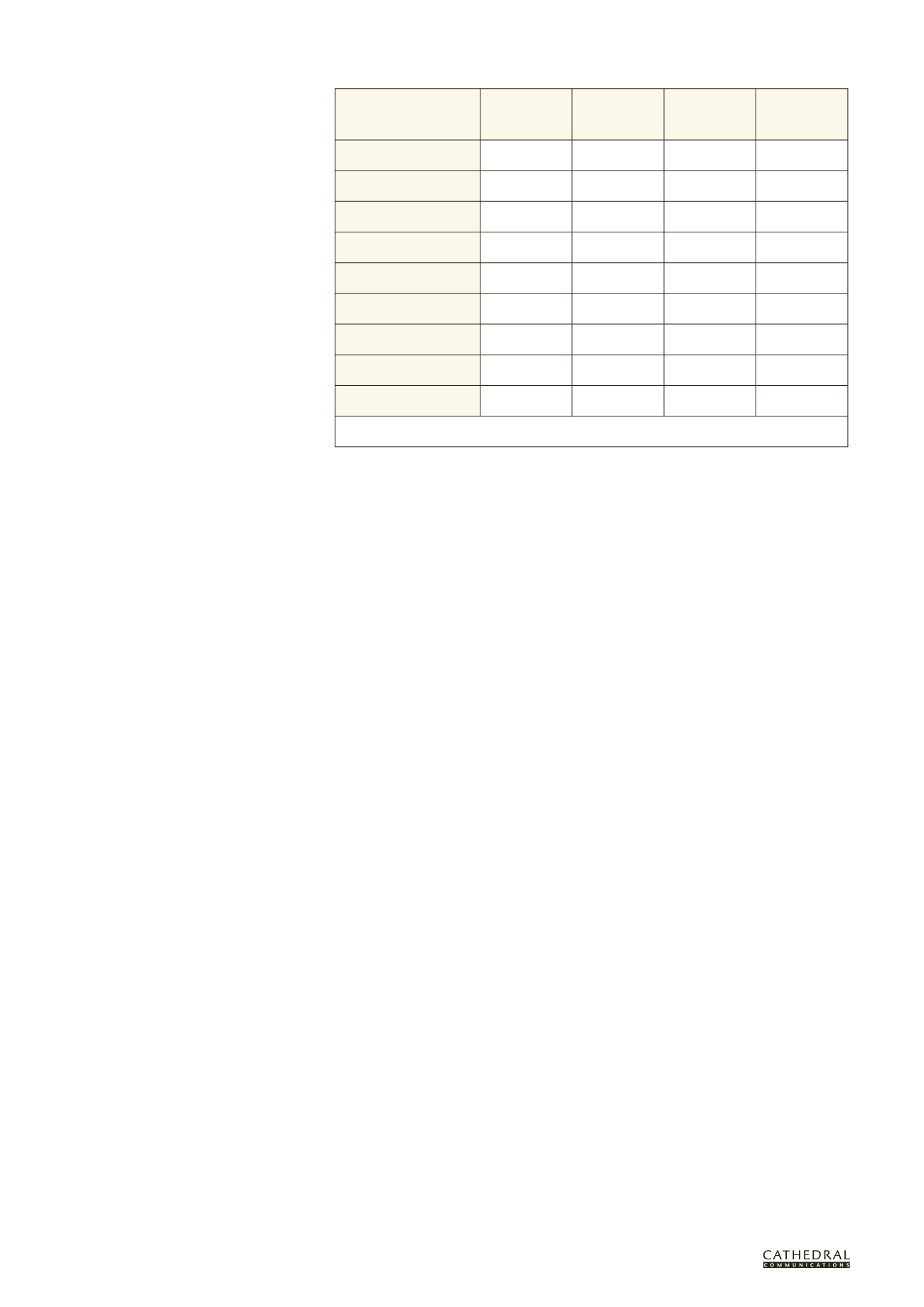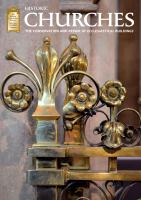

22
BCD SPECIAL REPORT ON
HISTORIC CHURCHES
22
ND ANNUAL EDITION
not ideal, in some circumstances you
will have to accept that there is no other
sensible answer, but it can be a difficult
case to argue with the DAC.)
POSITIVES
The paint is low cost, readily available and
easy to apply.
NEGATIVES
It is prone to static and particulate greying
especially over heaters. It is also prone to
scratching and staining.
Mineral Paints
Also known as silicate paints, these highly
porous paint systems are based on mineral
silicates which bond with a lime or stone
substrate through the development of
an insoluble microcrystalline structure.
They are stocked by most specialist
conservation materials suppliers. Free
from organic solvents, plasticisers and
biocides, they are naturally resistant to
mould and fungal growth and are suitable
for allergy sufferers. Surfaces are cleanable
and resistant to disinfectants making
the paint suitable for application in food
preparation areas.
POSITIVES
Mineral paints adhere to all types of
surface (but often require an undercoat
in order to equalise absorbency of the
general wall surface) and they come in a
wide range of whites and other colours.
There is good technical support on
site and over the phone, and detailed
technical literature is provided. They
are not prone to static and particulate
greying, and do not degrade in sunlight.
They have a long life and performance
warranties are available as long as the
selling agents approve the specification
and attend site occasionally.
NEGATIVES
Mineral paints are relatively high cost,
particularly if sealants and undercoats are
required (this depends on the underlying
properties of the painted surface). They
are unsuitable for use where historic
paint schemes might exist as mineral
paint systems are designed to penetrate
the underlying painted surfaces and
are almost impossible to remove. All
unpainted surfaces including stone
detailing, monuments and furnishing
must be protected as this type of paint
dries quickly and is non-reversible.
Limewash
The paint used traditionally both
internally and externally, limewash is
the most vapour permeable option.
Although less durable than modern
alternatives, it is ideal for lime plastered
and rendered walls, or for bare masonry
pointed with lime mortars. It can be
cheaply made by diluting lime putty,
and earth pigments such as ochre may
be added if a colour wash is required.
A binder such as linseed oil or tallow is
sometimes added, particularly for external
use, and an increasing number of new
formulations are being developed to
broaden its application. Limewash has
a very attractive appearance internally
and externally, good shadowing and
sunlight reflection, and it can be
reapplied in small areas where paint
surfaces are prone to damage.
POSITIVES
Limewash is a highly permeable, low-
cost option which can be used on old
limewash and lime plaster. It can also
help to consolidate friable lime surfaces.
It retains an attractive appearance over
long periods of weathering and use. It is
also historically appropriate in many older
churches where it was the original finish.
NEGATIVES
Limewash cannot be used on
impermeable surfaces or over modern
non-porous paint systems (although
it is often possible to remove a non-
traditional paint, particularly where
there are underlying coats of limewash).
It requires a large number of colour
wash coats to build up opacity.
Decorators require hand and eye
protection due to its caustic effect.
In conclusion, no matter what paint is
specified it will quickly degrade if the
underlying painted surface has not had
sufficient time to dry out following
repairs, or if loose paint has not been
thoroughly removed. Make sure the
plasterwork is only repaired with lime-
based or renovating plasters no matter
how small the hole. Fillers of any sort
should not be specified or allowed. Open
joints, particularly where the walls abut
timberwork, must not be sealed in order
to allow the timber to ventilate. Open
joints in the masonry construction require
repointing using a natural lime mortar
and, finally, surface waterproofing agents
such as water soluble PVA (Polyvinyl
acetate) should never be used.
Further Information
N Ashurst,
Cleaning Historic Buildings,
Vol 1, Donhead, Shaftesbury, 1994: Ch 7
describes paint removal and how to
apply traditional alternatives.
G Davies, ‘Vapour Permeable Paint’,
The Building Conservation Directory
,
Cathedral Communications, Tisbury,
1996
(http://bc-url.com/vapour): article
on the use of traditional limewash and
contemporary alternatives
English Heritage,
Practical Building
Conservation: Building Environment,
Ashgate, Farnham, 2014: large volume
with comprehensive coverage of
humidity and permeability issues
Internet search term: ‘
traditional vapour
permeable interior paints’
: provides links
to all of the current manufacturers and
companies which market their products
Internet search term: ‘
traditional lime and
renovating plaster’
: provides links to all
current manufacturers of traditional and
renovating wall plasters and companies
which market their products.
MARK PARSONS
is an architect accredited
in building conservation (AABC) and a
partner in the practice of Anthony Short &
Partners LLP in Ashbourne, Derbyshire (www.
asap-architects.com). He is responsible for the
quinquennial inspections of 130 churches in
the dioceses of Derby, Southwell and Lichfield.
CHARACTERISTICS
One-coat
(eg Classidur)
Contract
matt emulsion
Mineral paint
(eg Keim& Beeck)
Limewash
Vapour permeability
Very good
Varies
1
Very good
Excellent
Reversibility
Varies
2
Varies
2
Very poor
Excellent
Cover
Excellent
Good
Good
Poor
Adherence on moist ground
Good
Poor
Poor
Poor
Durability
Very good
Poor
Very good
Poor
Finish
Flat matt
Matt
Flat matt
Flat matt
Colour retention
Excellent
Varies
Excellent
Excellent
Dilution/cleaning
Proprietary
solvent
Water
Water
Water
Cost
High
Low
High
Low
NOTES
1
Contract matt emulsions with high chalk content have good vapour permeability
2
Film-forming paints are generally easier to remove where underlying layers are of limewash
















